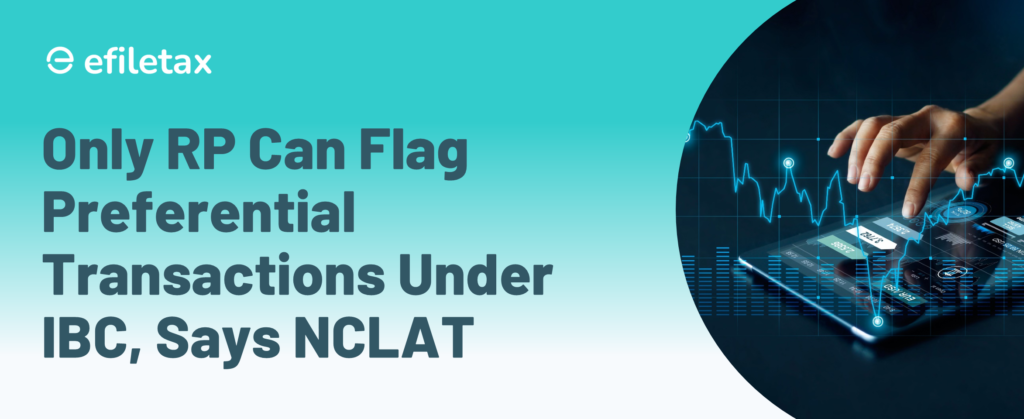
Preferential Transaction Application u/s 43 IBC Can Be Filed Only by RP NCLAT Clarifies
The National Company Law Appellate Tribunal (NCLAT) has ruled that only the Resolution Professional (RP) is authorised to file an application under Section 43 of the Insolvency and Bankruptcy Code (IBC), 2016 for avoidance of preferential transactions.
This landmark decision reinforces the role and responsibilities of the RP during the Corporate Insolvency Resolution Process (CIRP), and clarifies who can initiate actions against suspicious transactions.
What is a Preferential Transaction under Section 43?
Section 43 of the IBC deals with avoidance of preferential transactions, which occur when a corporate debtor unfairly favours one creditor over others before insolvency begins.
- Made within 2 years (for related parties) or 1 year (for others) before the insolvency commencement date
- It gives the creditor more than what they would otherwise get in the insolvency resolution
Key Takeaway from NCLAT’s Ruling
Only the RP can file the application
- The RP must apply after forming an opinion and determining the existence of a preferential transaction, as per Sections 25 and 29 of IBC.
Reference Case:
Date: May 2025
Bench: Justice Ashok Bhushan & Technical Member Barun Mitra
Why this matters for Insolvency Practitioners
This judgment prevents any bypass of the CIRP framework and ensures that all avoidance applications are:
- Initiated after due diligence
- Examined with neutrality by the RP
- Based on the timeline and guidelines under IBC
Legal Basis: IBC Sections Involved
| Provision | Description |
|---|---|
| Section 43 | Avoidance of preferential transactions |
| Section 25(2)(j) | Duty of RP to apply to NCLT for avoidance of vulnerable transactions |
| Section 29 | Preparation of information memorandum includes such transactions |
Expert View: What Should RPs Do?
🔸 Maintain accurate records and timelines of all transactions before CIRP.
🔸 Conduct a forensic review if suspicious patterns emerge.
🔸 Don’t delay in forming an opinion — timely action is key.
“This ruling strengthens the RP’s gatekeeping role. Creditors must now rely on the RP’s objective judgment rather than initiate avoidance cases themselves,” says insolvency expert CA Rajat Shah.
FAQ: Preferential Transaction Application
Q1. Can a creditor directly apply under Section 43 IBC?
No. Only the Resolution Professional can file such applications.
Q2. What if RP refuses to file despite a clear case?
Stakeholders may escalate to the CoC or move appropriate applications through other IBC sections.
Q3. Are all transactions with related parties preferential?
No. A detailed test under Section 43(2) must be met.
Conclusion
The NCLAT’s clarification strengthens the RP’s role in avoiding and reversing preferential transactions. It eliminates confusion on who can initiate such action and helps maintain a fair insolvency resolution process.
If you’re a creditor or professional involved in CIRP, ensure you coordinate closely with the RP and document concerns early.
👉 Need help with IBC compliance or insolvency matters?
Contact Efiletax’s expert panel for support.
Summary
NCLAT has ruled that only the Resolution Professional (RP) can file an application under Section 43 of IBC for avoidance of preferential transactions. Creditors or third parties cannot initiate such cases, reinforcing the RP’s central role in CIRP proceedings.